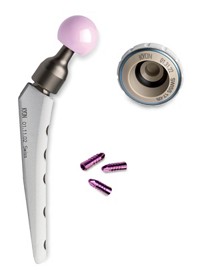Advertisement
Grab your lab coat. Let's get started
Welcome!
Welcome!
Create an account below to get 6 C&EN articles per month, receive newsletters and more - all free.
It seems this is your first time logging in online. Please enter the following information to continue.
As an ACS member you automatically get access to this site. All we need is few more details to create your reading experience.
Not you? Sign in with a different account.
Not you? Sign in with a different account.
ERROR 1
ERROR 1
ERROR 2
ERROR 2
ERROR 2
ERROR 2
ERROR 2
Password and Confirm password must match.
If you have an ACS member number, please enter it here so we can link this account to your membership. (optional)
ERROR 2
ACS values your privacy. By submitting your information, you are gaining access to C&EN and subscribing to our weekly newsletter. We use the information you provide to make your reading experience better, and we will never sell your data to third party members.
Polymers
Olivo Laboratories
Polymeric second skin erases signs of aging and provides a protective layer for skin conditions
by Bethany Halford
October 31, 2016
| A version of this story appeared in
Volume 94, Issue 43

Olivo Laboratories
Launched: 2015
Headquarters: Cambridge, Mass.
Focus: dermatology, cosmetics, and drug delivery
Technology: polymeric second skin for medical and cosmetic applications
Founders: Daniel G. Anderson, Rox Anderson, and Robert Langer
Funding or notable partners: Polaris Partners and Living Proof
With age comes wisdom and life experience, but there’s also that undesirable baggage one accumulates while racking up the years—specifically, those ugly bags of skin that bulge beneath the eyes.
Scientists at Olivo Laboratories have created a polymeric skin treatment that erases wrinkles and firms up unsightly under-eye bags in a matter of minutes. That same wrinkle-erasing treatment isn’t just for making us look better; it could make people with serious skin conditions feel better, too.
Olivo calls the product XPL second skin. XPL stands for cross-linked polymer layer, a descriptor of the product’s chemistry and a way of differentiating it from other so-called second skins on the market, explains the company’s interim CEO, Amir Nashat.
The idea, says Daniel G. Anderson, one of Olivo’s scientific founders and a chemical engineering professor at MIT, was first dreamed up about eight years ago at Living Proof, a maker of high-end hair care products that Olivo spun off from.
Most cosmetics that claim to smooth wrinkles or lessen the appearance of bags under the eyes don’t actually work, Anderson says. Those that do, he adds, take weeks of use before even minor changes are visible. The researchers’ goal was to create something that had an immediately visible effect as soon as it was applied to the face, Anderson explains.
The polymer is created directly on the skin by first applying a cream containing fumed silica and a polysiloxane. A second cream that contains platinum is then applied. The platinum acts as a catalyst for a hydrosilylation reaction that cross-links the polysiloxane into a three-dimensional silicone elastomer—the XPL second skin—that’s two to three times as thick as the skin’s topmost layer. It’s during the polymerization that the skin tightens up.
The material also contains nylon particles that scatter light to provide a natural appearance. It peels off for easy removal. Olivo reported the work in Nature Materials in May (DOI: 10.1038/nmat4635).
The second-skin concept may ring a bell with beauty mavens. In 2014, Living Proof introduced a two-step under-eye treatment called Neotensil. The product cost $500 for a seven-week supply and was only available by prescription. But the company discontinued it after less than a year. Anderson tells C&EN that Neotensil and XPL second skin are related, but not identical.
And while it’s possible that XPL second skin might one day be available at the cosmetics counter, Anderson says the company is currently focused on using it to treat skin conditions such as eczema and atopic dermatitis. Bandages for many such conditions can be primitive, he points out. Patients will often slather their skin in Vaseline and cover it with Saran wrap.
“The thinking was that if you could have a barrier that was therapeutic but also provided an aesthetic advantage over Saran wrap, it could really help a lot of people,” Anderson explains.
The move toward medical applications isn’t a big surprise considering that Robert Langer, an MIT chemical engineering professor and founder of many companies focused on medicine, and Rox Anderson, a dermatologist at Massachusetts General Hospital and Harvard Medical School, are also among Olivo’s scientific founders.
“There hasn’t been a lot of innovation in skin care,” Nashat notes. “Hopefully, we’ll inspire other people.”
Know a start-up we should consider for next year's list? Nominate it here: cenm.ag/startupnom



Join the conversation
Contact the reporter
Submit a Letter to the Editor for publication
Engage with us on Twitter